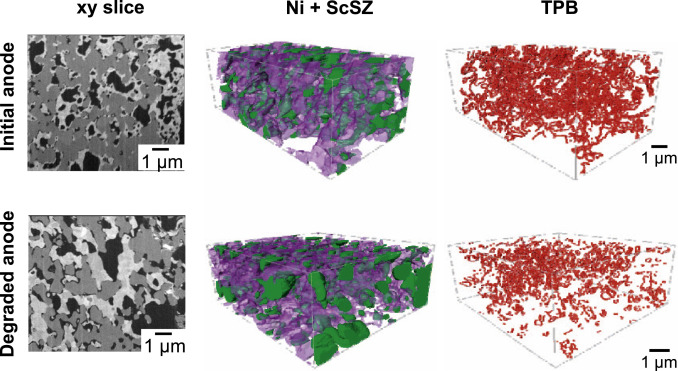The fractal nature of the three-phase boundary: A heuristic approach to the degradation of nanostructured solid oxide fuel cell anodes
Nickel/zirconia-based nanostructured electrodes for solid oxide fuel cells suffer from poor stability even at intermediate temperature.

This study quantifies the electrochemical and microstructural degradation of nanostructured electrodes by combining 3D tomography, electrochemical impedance spectroscopy (EIS) and mechanistic modeling. For the first time, the electrochemical degradation of nanostructured electrodes is quantified according to the fractal nature of the three-phase boundary (TPB). Using this hypothesis an excellent match between modeling and the electrochemical response is found. The origin of the degradation in microstructure and electrochemical performance can be found in the initial fractal roughness of the TPB at a length scale not detectable with state-of-the-art tomography at 30 nm resolution. This additionally implies that the hydrogen electro-oxidation takes place within 4 nm from the geometric TPB line, revealing that the electrochemical reaction zone cannot be regarded anymore as a one-dimensional line when dealing with nanoparticles.